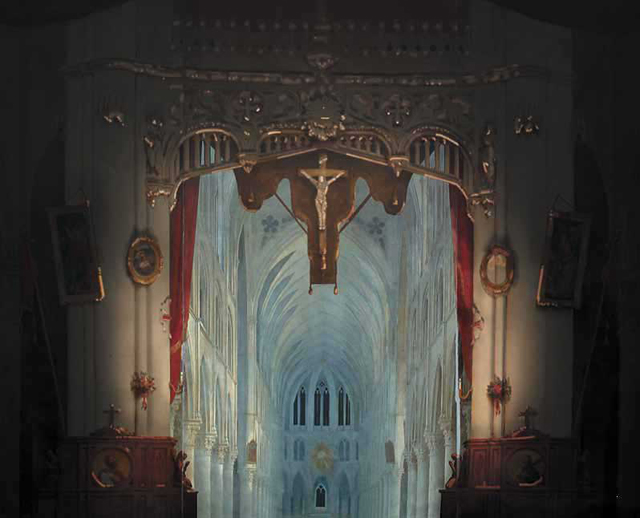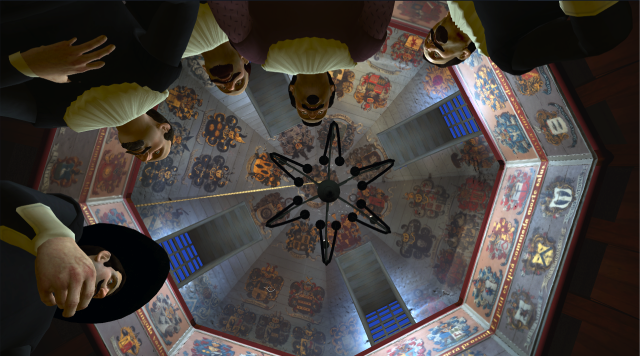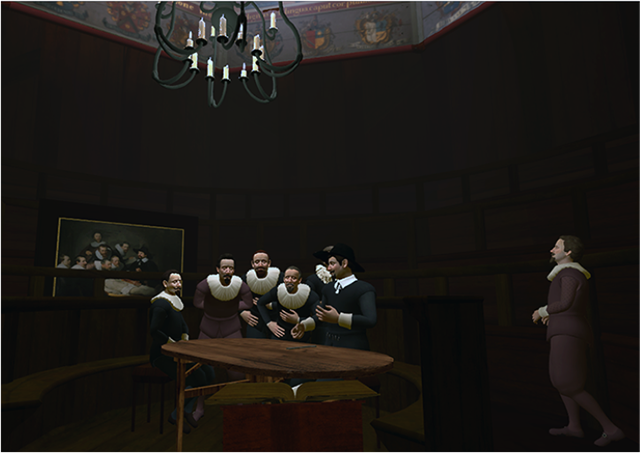I
Very material diorama visions
What is a diorama?
The vision of the diorama, or what it conjures in modern children (at least many of those who grew up in the larger metropolis and had the chance of visiting a Museum of Natural History is that of the large exhibition halls with exotic species.

General consensus seems to be that the diorama was invented by Louis-Jacques-Mandé Daguerre and Charles Marie Bouton years before he invented the daguerreotype process of photography. In contrast to the photographic process that seeks to capture light, the dioramic image “depended on the constant, visible movement of light manipulated with shutters and screens both onto and through a semi-translucent painting.” (Dead Media Archive)

II
A connection between the Diorama and contemporary media
In humans the notion of place (not space) is strongly tied to the notion of time. According to Keith Basso, places are locations “where time and space have fused and where through the agency of historical tales and narratives (for example), this intersection is made visible for human contemplation. (62)”
For contemplation and also for consumption, since the establishment of his diorama facility enabled Daguerre to earn a good living while entertaining Parisian audiences with presentations of diorama paintings such as: 1. The innaguration of Solomon’s temple; 2. The tomb of Napoleon at St. Helene; 3. A view of the Black Forest, to name a few.
The diorama, film, and virtual reality are all time-based media that primarily communicate perceptually not through signs such as writing but by relying on allocentric cues from the environment. However in its focus on place the diorama resembles more virtual reality than film.
III
The Anatomy Lesson of Dr. Nicolæes Tulp
Like in the diorama, and the museum, virtual reality has the capacity to cordon off our experiences. In the museum the physical space of the hall separates us from the outside world. The signage and labels guide our bodily movements delivering (or not) knowledge and experience. Here we have the body as site of memory itself. This is one of the reasons why we decided that there would be no dead body modelled but rather, the visitor assumes the place of Aris Kindt, the executed criminal who had no choice of whether to be there.
The place of the lesson that we have rendered is a hypothetical space inside (perhaps behind the painting) is a replica of the 1691 anatomical theatre built approximately sixty years after the sitting for the painting took place. The space is based on the study of 18 century sources and photogrammetry done at Waag Society, site of the Amsterdam’s Barbers Guild already established by the early 17th century.

What is in the work? Inside the anatomy theatre we created is the book used during the lesson, presumed to have been Andrea Vesalius 16th century anatomy handbook. This volume has been rendered in 3D. An animation opens up the the book and allows the viewer to watch and listen to a contemporary dissection of a human hand. Outside sections of the book have been extracted and hung around as a net to mark the perimeter of interaction. If the guest wanders off, she will feel the A3 transparent vellum pieces.
Inside also, a copy of the original painting sits on the stands so that the interactant can approximate it closer than it would be possible in the real museum space.
Inside seven of the doctors are present. In Rembrandt’s painting there are eight. But we decided to render only seven, when after doing some research we found out of one who was not present at the original sitting but was added later, presumably after paying his fee to appear. They have been created as avatars. Idle animations have been mapped to these models using motion capture so it could be said that they have their own thing going on.
Interactive Diorama, The Anatomy Lesson of Dr. Nicolaes Tulp by Rembrandt, 1632 from Lily Díaz on Vimeo.
Conclusion: Designing knowledge
As a designer and researcher, the work that I do in using digital media to create simulations and replicas of cultural heritage is partly about gauging the difference between something that is as close as possible to the existing hypotheses regarding original source material or perhaps rendering something that is more imaginative.
The objective of these works is to trigger heuristic cycles of interpretation, where hopefully the “What if?” questions lead to new, unexpected encounters and avenues for exploration.

